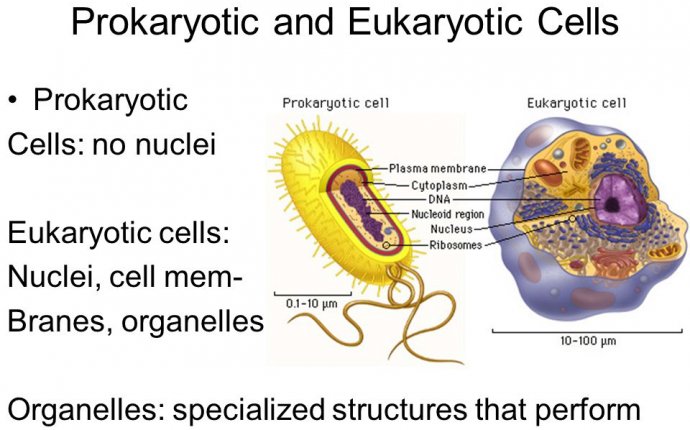
Specialized Structures in Prokaryotic cells
| Prokaryotic Cells
|
Prokaryotic cells are the simplest systems that exhibit all of the signs of life. They are the smallest types of cell, averaging 2-5 m in length, which makes them just visible under the light microscope.
Despite their small size, inside each cell there is the complete chemical and biochemical machinery necessary for growth, reproduction and the acquisition and utilization of energy. Prokaryotes have a large array of abilities. Some of them live in the absence of oxygen, some live in extreme conditions of heat or cold, others at the bottom of oceans where the only source of energy is hot hydrogen sulfide bubbling up from the core of the earth. |
| Common Features
|
Energy comes in many forms, and various types of prokaryotic cells are adept at using almost all of them. In large measure the actual structure of one of these cells reflects the way in which it acquires energy, but, despite their diversity, all prokaryotic cells have the following features in common. |
| A Cell Wall.
|
Prokaryotic cells walls give structural integrity and shape to the cell and serve to anchor the whip-like flagellae (see below). |
| A Plasma Membrane.
|
Just inside the cell wall, the plasma membrane is a selective barrier which regulates the passage of materials to from the cell. It is through this membrane that a cell must exchange food molecules, gases and other vital ingredients. Composed of phospholipid and protein membranes form thin, flexible, self-sealing, highly selective barriers between the inside of the cell and the outside world. |
| Lack of Compartmentalization.
|
Within the plasma membrane is a viscous solution of proteins and other soluble materials. This is the cytoplasm, a complex semifluid material that holds all the molecules, large and small, necessary for carrying out the major metabolic reactions. The cytoplasm is not subdivided by membranes into organelles, a lack of compartmentalization that is most evident when we look at the organization of the genetic material. This is an important distinguishing feature of these types of cells. |
| Structure of the Genetic Material.
|
Genetic information in prokaryotic cells is carried on a single circular piece of DNA which is attached to the cell membrane and in direct contact with the cytoplasm. There is no enclosing membrane, so there is no true nucleus, but simply a concentration of DNA known as a nucleoid. There are no special proteins associated with this DNA molecule. |
| Plasmids. | Some prokaryotes also carry smaller circles of DNA called plasmids. The genetic information on the plasmids is transferrable between cells, allowing prokaryotes to share such abilities as antibiotic resistance. Humans have discovered that prokaryotic plasmids can be genetically engineered. Today, they are isolated, changed to carry other interesting information and then reintroduced into new cells. In this way unique and usefull... |
Source: www.brooklyn.cuny.edu



